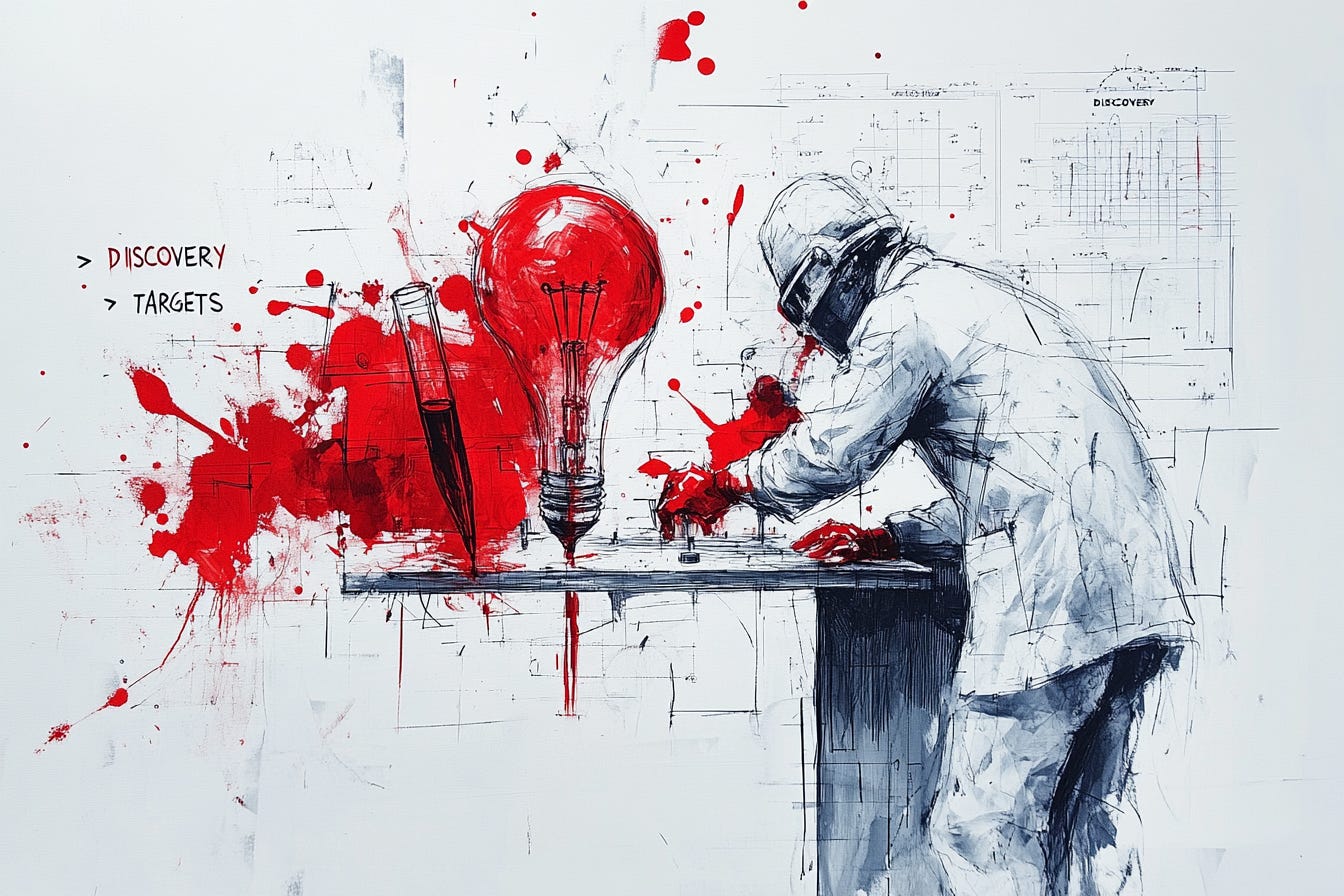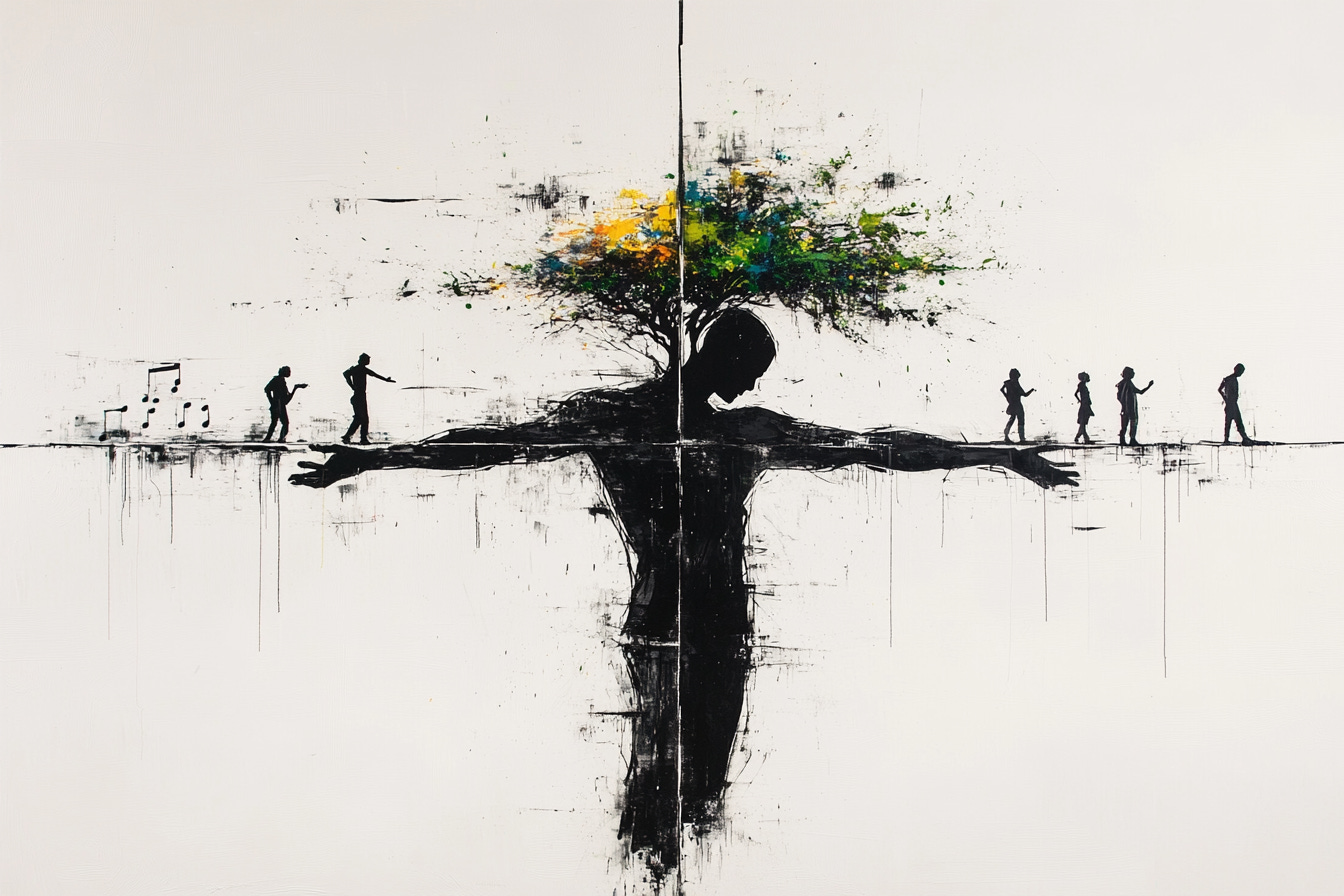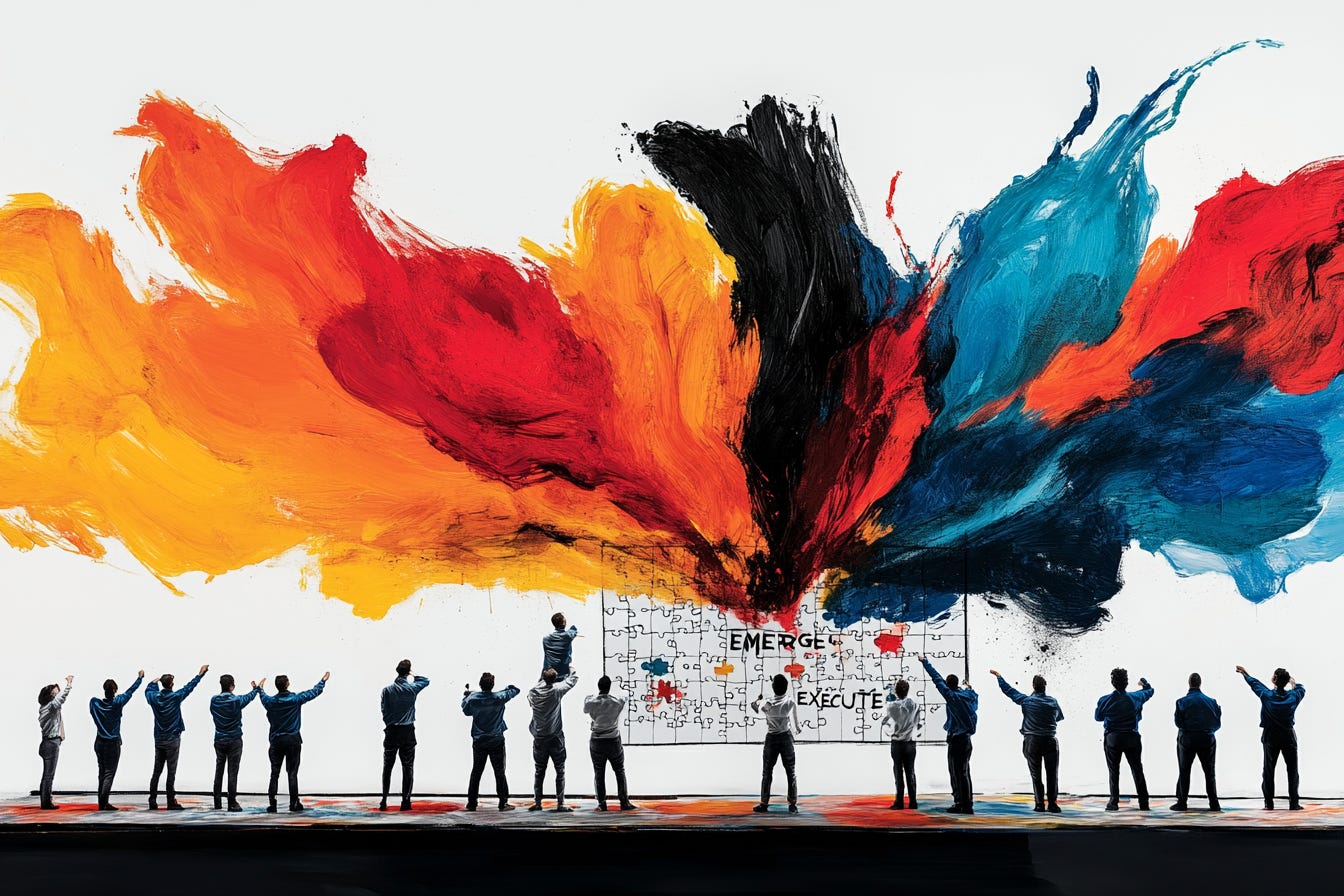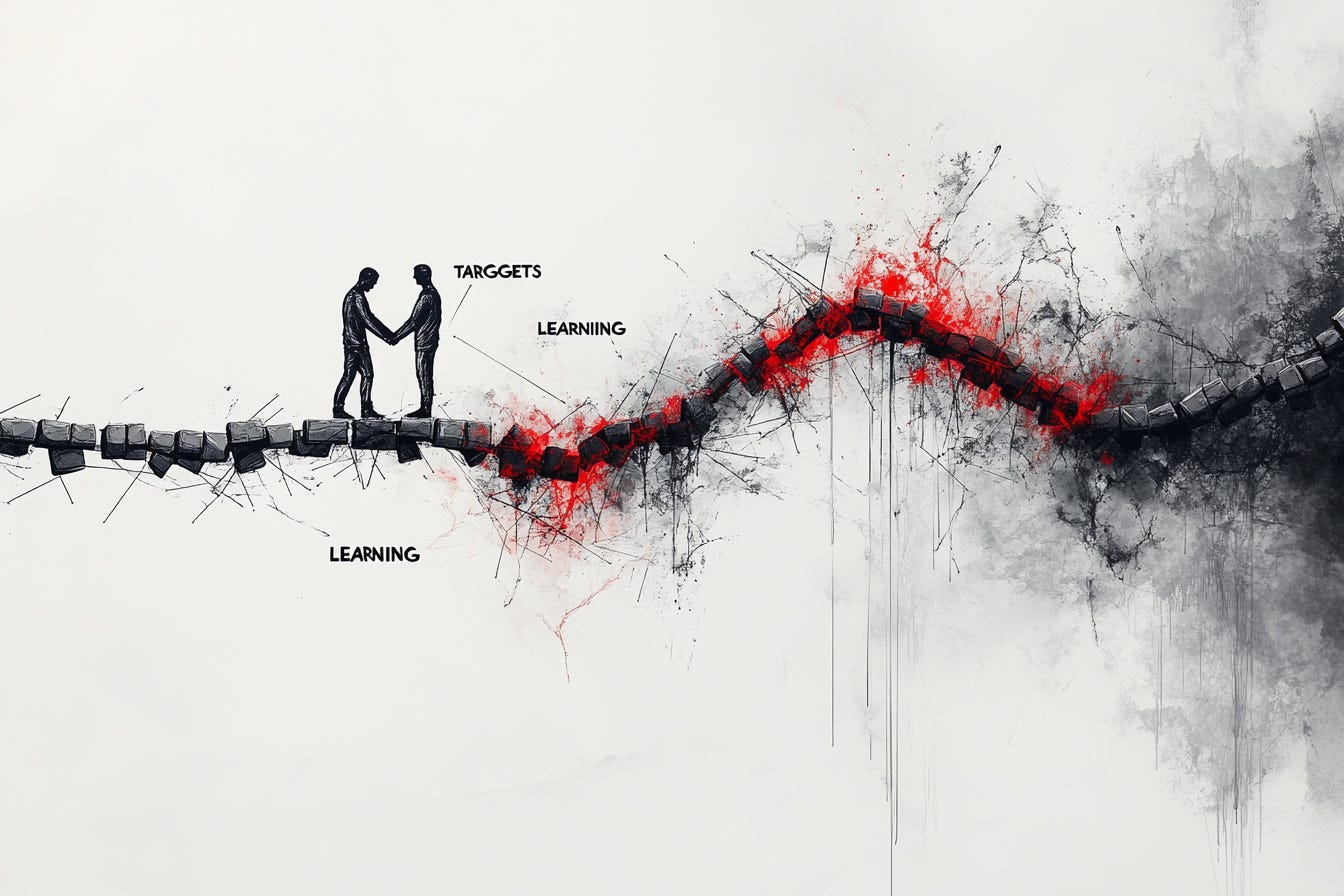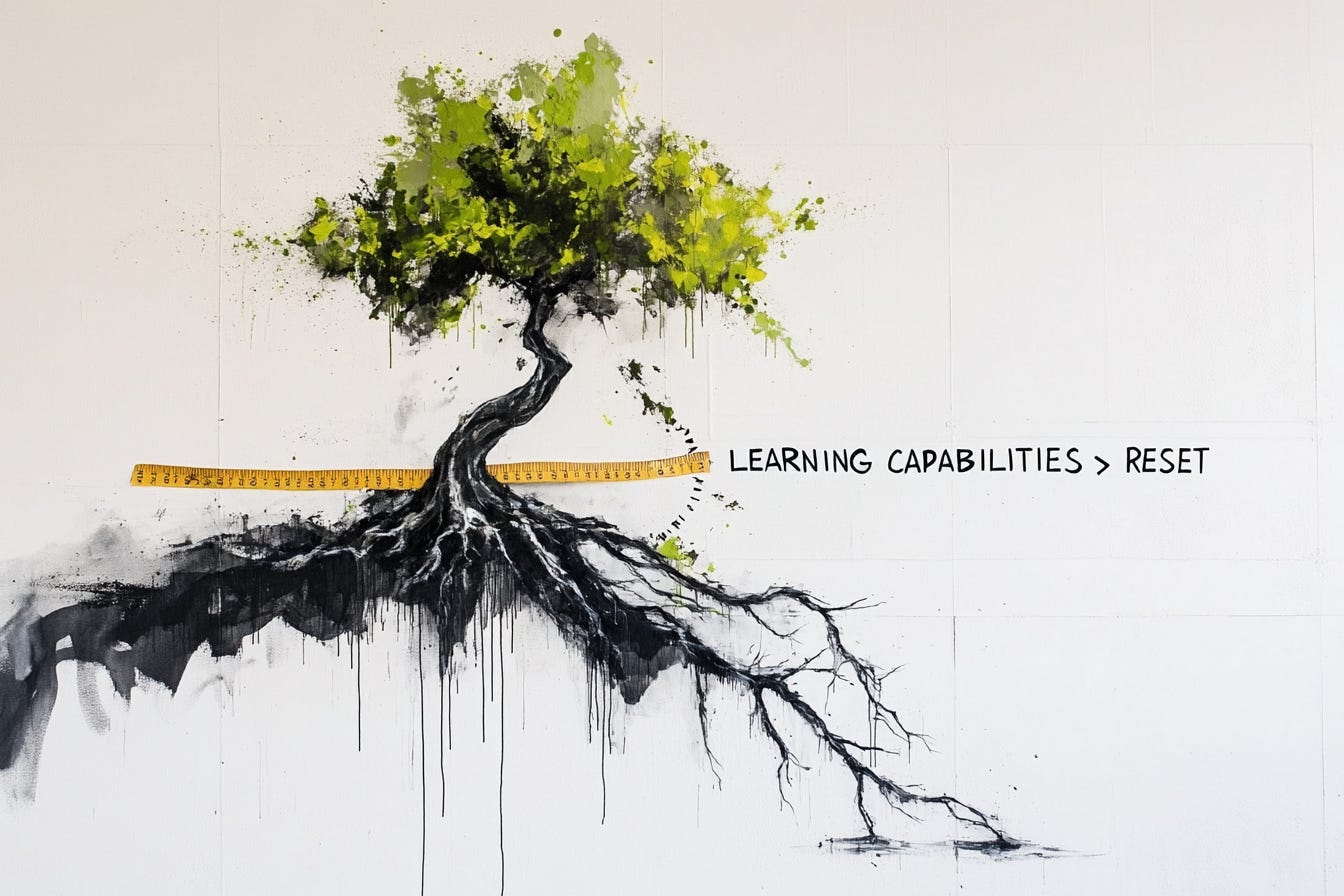This exploration builds on "The OKR Performance Theater: Why Goal-Setting Sabotages the Goals", which examined how well-intentioned goal-setting systems inadvertently create elaborate performances that suppress the very thinking breakthrough results require. Now we turn to the alternative: building systems that thrive on discovery rather than predictability.
The failure of OKR theater isn't an argument against direction or accountability—it's evidence that we're solving the wrong problem entirely. While organizations exhaust themselves trying to create the illusion of predictability through cascaded objectives, the real challenge lies in building systems that thrive on adaptive discovery.
Consider a team tasked with "increasing user engagement". Rather than setting a target to "launch five new features", they began with a question:
"What's the biggest barrier preventing our users from getting value?"
Their first two weeks involved no coding—just conversations with users and one small experiment that invalidated a core company assumption. That seemingly "unproductive" discovery saved six months of engineering work.
This team wasn't hitting targets; they were operating as a learning system.
The shift from target-setting to learning systems represents more than tweaking methodologies. It requires fundamentally different thinking about how organizations create value in dynamic environments. Rather than optimizing for predictable achievement of predetermined outcomes, effective systems optimize for the speed and quality of learning about what actually works.
The Laboratory Mindset
Consider how breakthrough innovations actually emerge. A pharmaceutical research team doesn't begin with quarterly targets for discovering life-saving drugs. Instead, they start with hypotheses about biological mechanisms, design experiments to test those hypotheses, and adapt their approach based on what each experiment reveals. The value lies not in hitting predetermined milestones but in the quality of learning that accumulates over time.
This laboratory mindset—treating work as a series of experiments rather than predetermined tasks—unlocks capabilities that traditional goal-setting systems actively suppress. Teams begin asking fundamentally different questions:
Instead of asking "How can we hit our targets?" teams begin wondering:
What are we learning about creating value?
Which assumptions are proving accurate?
What evidence suggests we should adjust our approach?
The transformation affects everything from daily conversations to strategic planning. Teams develop comfort with uncertainty and skill in designing small experiments that test critical assumptions quickly and affordably. They learn to distinguish between different types of evidence and adjust their confidence levels accordingly. Most importantly, they develop what might be called learning velocity—the ability to cycle rapidly between hypothesis, experiment, and adaptation.
Rhythm Over Rigidity
The most sophisticated organizations have discovered that effective direction-setting follows a rhythm rather than a rigid schedule. This rhythm—pioneered by my good friend Rune Ulvnes at CoWork AS as Tight-Loose-Tight—creates space for both alignment and adaptation while avoiding the performance theater that quarterly OKR cycles often produce. The structure prevents the chaos that skeptical managers fear while enabling the discovery that rigid systems suppress.
The first "Tight" phase serves as the crucial link between top-down strategy and autonomous exploration. Leadership provides the problems worth solving—derived directly from strategic imperatives—without prescribing solutions. This ensures that team autonomy doesn't become aimless wandering while preserving space for genuine discovery.
During the "Loose" phase, teams exercise genuine autonomy guided by outcome awareness rather than metric optimization. They design experiments, gather evidence, and adapt their approach based on what they learn. The freedom feels different from traditional empowerment because it's anchored in shared understanding of desired outcomes rather than mere delegation of predetermined tasks.
The final "Tight" phase—the most important phase and often called "Stop! Think!"—creates structured opportunities for reflection that go far beyond traditional performance reviews. Rather than evaluating whether teams delivered what they promised, these conversations examine what teams discovered about creating value.
Questions shift from "Did we hit our numbers?" to
"What surprised us?”
“Which assumptions proved accurate?”
“What barriers did we encounter that nobody anticipated?"
This rhythm naturally accommodates the reality that breakthrough insights rarely arrive on quarterly schedules. Teams can accelerate when they discover promising approaches or pivot when evidence suggests better paths, all while maintaining strategic coherence and mutual accountability.
The Architecture of Learning
Effective learning systems require more than good intentions—they need structural support that makes adaptive behavior easier than mechanical execution. The most successful organizations discover that their belief systems, boundaries, measurements, and interactions must work together as a unified architecture. This approach builds on Robert Simons' Four Levers of Control framework, reimagined for learning-oriented organizations.
Belief systems provide the fundamental purpose that fuels exploration and discovery. Rather than abstract values statements, they create shared understanding of how value emerges and what evidence indicates genuine progress.
Boundary systems create safe playgrounds for bold experimentation within strategic limits. Instead of constraining behavior, they clarify which problems merit attention and what kinds of exploration align with organizational direction.
Measurement systems track learning indicators alongside traditional performance metrics, making discovery a first-class citizen rather than an afterthought. Teams monitor not just what they accomplished but what they discovered about creating value.
Interactive processes become the structured dialogues where insights surface and assumptions face scrutiny—the organizational equivalent of the "Stop! Think!" moments that drive real adaptation.
When these elements work together, they create something more powerful than the sum of their parts: an environment where learning velocity accelerates naturally because every system reinforces curiosity over compliance. For a deeper exploration of how these control systems enable rather than constrain autonomy, see my analysis of "The Paradox of Autonomy".
Puzzles Instead of Targets
The fundamental shift from targets to learning manifests most clearly in how teams approach their work. Traditional goal-setting treats challenges as engineering problems—define the desired outcome, identify the required activities, execute the plan, measure progress against milestones. This works well for predictable, well-understood challenges where the relationship between activities and outcomes is clear.
But most meaningful organizational challenges resemble puzzles rather than engineering problems. The solution isn't predetermined; it emerges through exploration, experimentation, and adaptation. Teams must discover what works rather than simply executing what's planned.
Of course, not all work is a puzzle. A sophisticated organization must run factories alongside its laboratories. For well-understood, repeatable processes—maintaining core infrastructure, processing transactions, delivering established services—traditional performance metrics and target-setting have their rightful place. The error lies not in using these tools but in applying factory thinking to laboratory work, where the next generation of value is born.
A mature enterprise doesn't choose one model over the other; it skillfully applies the right approach to the right challenge. It uses target-based systems to optimize its factories and learning-based systems to invent its future.
The failure of most goal-setting systems is their one-size-fits-all application, which cripples innovation by treating every challenge like a predictable execution problem.
Puzzle-solving requires different capabilities than target-hitting. Teams need skill in designing experiments that test critical assumptions with minimal investment. They must develop comfort with ambiguity and ability to maintain momentum while learning. They need frameworks for distinguishing between different types of evidence and adjusting their approach accordingly.
This shift from goal-setting to puzzle-solving aligns with what product strategist Radhika Dutt calls "OHLs" (Objectives, Hypotheses, Learnings)—an approach that treats challenges as puzzles to solve rather than targets to hit, emphasizing discovery over predetermined execution. The OHLs framework captures many of the same principles that make the Tight-Loose-Tight rhythm effective: creating space for hypothesis formation during the "Loose" phase, structured learning during reflection, and the iterative cycle of experimentation that drives adaptive capability.
Most importantly, puzzle-solving demands continuous questioning of fundamental assumptions—not just whether current approaches are working, but whether teams are solving the right problems in the first place. This deeper level of inquiry emerges naturally from experimental approaches, where each iteration invites teams to examine not only their methods but their understanding of the challenge itself. Traditional goal-setting systems rarely create space for this kind of fundamental questioning because they prioritize consistency and commitment over adaptation and discovery.
The Trust Foundation
None of this works without psychological safety and genuine trust between teams and leadership. Traditional goal-setting systems often function as elaborate trust-substitutes—if teams commit to specific deliverables and hit their targets, leadership assumes everything is proceeding appropriately. But learning-oriented approaches require deeper trust because the path to value creation becomes genuinely unpredictable.
As a leader,
are you genuinely comfortable with teams discovering better approaches than originally planned, even when those discoveries require abandoning previous commitments?
Can you distinguish between productive learning and aimless experimentation when the difference isn't always immediately apparent?
These questions reveal the psychological demands that learning systems place on organizational relationships.
Leaders must develop comfort with teams that discover better approaches than originally planned, even when those discoveries require abandoning previous commitments. They need skill in distinguishing between productive learning and aimless experimentation. Most challengingly, they must model intellectual honesty about their own assumptions and demonstrate genuine curiosity about what teams are discovering.
Teams, in turn, must earn this trust through rigorous thinking and transparent communication about their learning. They need to distinguish between changing direction based on solid evidence versus changing direction because the original approach felt difficult. They must develop ability to communicate uncertainty without appearing indecisive and to propose course corrections that strengthen rather than undermine strategic coherence.
The Compound Effect
A thoughtful manager might read this and wonder:
"Where is the accountability?”
“Without targets, how do I know my teams are performing?"
This question reveals a critical assumption—that accountability can only be measured by hitting predetermined numbers.
The transition from targets to learning doesn't eliminate accountability—it elevates it.
"Teams become accountable for the quality of their thinking, the rigor of their experiments, and their ability to extract actionable insights from ambiguous evidence".
This represents a more demanding form of accountability, focused on building capabilities that compound over time rather than outputs that reset each quarter.
Teams that develop superior learning velocity become increasingly valuable because they can navigate uncertainty and complexity more effectively than competitors who optimize for predictable execution. The measurement focus shifts accordingly. Instead of tracking variance from plan, organizations monitor learning velocity, experimental quality, and the speed with which insights translate into improved approaches.
Organizations that master this transition discover something remarkable: learning-oriented systems produce better traditional metrics than target-oriented systems, while simultaneously building adaptive capabilities that provide lasting competitive advantage. Teams that focus on understanding what creates value often achieve better results than teams that focus solely on hitting predetermined targets.
This happens because learning-oriented approaches naturally surface and address the assumptions that limit performance in target-oriented systems. Teams discover which activities actually drive outcomes versus which activities merely feel productive. They identify barriers and constraints that prevent breakthrough performance. Most importantly, they develop judgment about when to persist with current approaches versus when to explore alternatives.
The compound effect emerges because each learning cycle improves not just immediate results but also the team's capability to learn and adapt in future challenges. Organizations build what might be called organizational intelligence—the ability to sense changes in environment, experiment with responses, and scale effective approaches while abandoning ineffective ones.
This represents the essential difference between organizations that thrive in complex environments versus those that merely survive them. While target-oriented systems optimize for predictable execution of predetermined plans, learning-oriented systems optimize for adaptive capability in unpredictable environments. In a world where the pace of change continues accelerating, this adaptive capability may be the most valuable asset any organization can develop.
The choice isn't between direction and chaos. It's between systems that assume we know what works and systems that help us discover what works.
In a world where adaptive capability is the ultimate competitive advantage, the future belongs to organizations brave enough to choose discovery.
Further Exploration
The Dark Side of Organizational Intelligence: Understanding Functional Stupidity - How organizations systematically suppress the cognitive capabilities that learning systems require
The Twin Engines of Scaling: Understanding Lab and Factory Patterns - How successful organizations balance experimentation with reliable delivery
Undivided Leadership: The Timeless Lesson from Henrik Ibsen's "Brand" - Why authentic leadership requires aligning words with actions in organizational transformation



